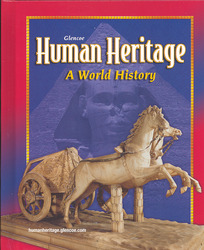
Human Heritage: A World HistoryChapter 37: Conflict and ChangeConflict and ChangeThe first half of the 1900s was a period of turmoil throughout the world. In 1914, a war broke out in Europe that soon grew to be World War I. Although it ended in 1918, anger over the peace settlement and poor economic conditions following the war led to World War II. The same period also saw the rise of communism in Russia and neighboring countries. Chapter 37 discusses the worldwide conflicts and changes in the first half of the twentieth century. Section 1 discusses the causes, events, and results of World War I, also called the Great War. The section explains why the war differed from any earlier war, describing the type of fighting that took place, the number of casualties, and the fact that civilians were attacked. President Wilson's Fourteen Points, the Treaty of Versailles, and the League of Nations are explained. A map illustrates how Europe was changed by World War I. Section 2 deals with the period between World War I and World War II. The section explains how communism developed in Russia, how economic depression affected most of the industrialized countries of the world, including the United States, why Italy and Germany each became a dictatorship, and the events that again led the world to war. Section 3 focuses on World War II, which was fought by the Allied Powers (Great Britain, France, the Soviet Union, and the United States) and the Axis Powers (Germany, Italy, and Japan). The section details the events of the war in Europe, Asia, and the Pacific, as well as the aftermath and results of the war. |  |















